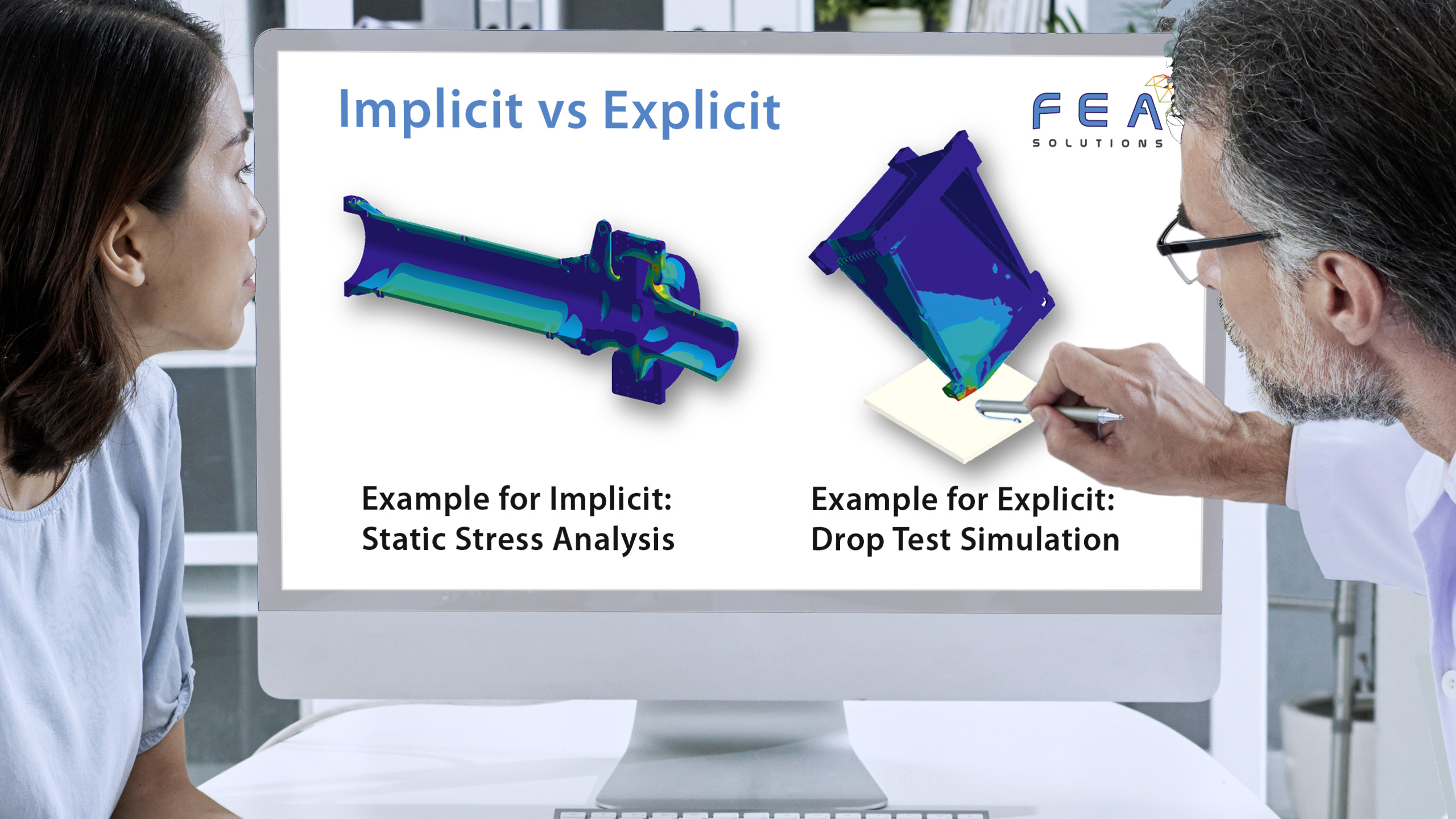
11 Dec Implicit vs Explicit
In an FEA simulation, two different solution methods can be used, implicit or explicit. They both have their benefits and there are types of analyses that are more suited to one or the other.
An implicit solver solves the unknowns in the numerical equations by the inversion of the matrices that make up the model (an example being the stiffness matrix). Larger models (more finite elements) have larger matrices and thus the analysis will take more time. When non-linearities (https://fea-solutions.co.uk/non-linear-behaviour/) are present in the model, the solution for the current time step is based on the solution from the previous time step. An implicit solver will produce solutions that are stable and allow for larger time increments.
An explicit analysis aims to solve for acceleration. The accelerations are solved for the nth time step, then the velocity is solved for the n+1/2 step, and displacement at the n+1 step. Unlike an implicit analysis, the solutions are not always stable and much smaller time steps are required. The time step in an explicit analysis must be less than the time taken by a sound wave to travel across an element and is hence dependent on the mesh size and the material properties. This is known as the Courant time step.
Because of these differences, an implicit solver is more suited to static or slow dynamic events, and where the effects of strain rates are small or negligible. An explicit solver is more suited to fast dynamic analyses, such as shock (https://fea-solutions.co.uk/shock-analysis/), drop and impact (https://fea-solutions.co.uk/drop-and-impact/).
Please call us today on +44 (0)1202 798991 for any engineering analysis requirements you might have.
